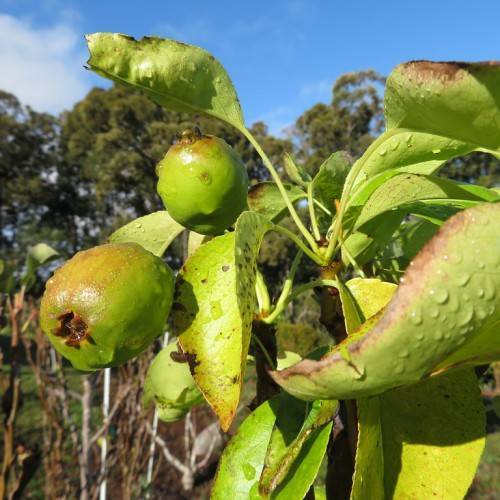
common pear
Pyrus communis 'Seckel'
Cycle:
Perennial
Watering:
Average
Hardiness Zone:
5 - 8
Flowers:
Flowers
Sun:
Full sun
Fruits:
Fruits Ready In Fall
Edible:
Yes
Leaf:
Yes
Growth Rate:
Low
Maintenance:
High
Care Level:
Medium
watering
Common pear should be watered once or twice a week, depending on the weather. Watering the plant deeply, to a depth of 8 to 10 inches, will help it grow and produce large, juicy fruit. Water thoroughly so that the entire soil profile is saturated. If the soil is sandy, water may be necessary every 4 to 5 days. During hot, dry days, water once daily. If the soil is especially heavy, it can go up to twice a week. The key is to water consistently and monitor the soil moisture. If the soil is dry more than an inch down, supplement with water. Avoid watering the foliage as it can cause disease.
sunlight
Common pear requires full sunlight for at least 6 hours a day in order to thrive. The ideal amount of sunlight for the Common pear is 8-10 hours of direct sunlight each day. It is also necessary for the plant to receive a few hours of morning sunlight, as the morning sunlight helps the plant to gain energy and store it until it gets the benefits of afternoon sunlight. If the Common pear does not get enough sunlight, it will lose the majority of its leaves, resulting in weak growth and poor yields. Therefore, it is important to make sure the Common pear gets enough sunlight for optimal growth.
pruning
Common pear trees should be pruned when the tree is still young in its first year. The goal is to produce a strong, central leader and well-spaced lateral branches. For the first 2 growing seasons after planting, focus on removing waterspouts and strong, upright shoots. For the first 3 to 4 years, prune only to shape and to remove any dead, diseased or damaged branches. Once your pear tree is about 4 years old, it is time to begin annual pruning. Prune during the late winter before the tree breaks dormancy (late February to late March). Remove water sprouts and branches that are too close together. Cut back the stems that are crossing or that rub against each other. Also, remove any branches that are dead, diseased, or damaged. To maintain a desired shape, selectively remove branches to promote outward growth and to open the plant’s center. Always use sharp, sterilized tools when pruning and make sure to make clean cuts. When pruning a pear tree, avoid topping it. Topping reduces fruit production and decreases the plant’s health and vigor.
